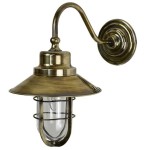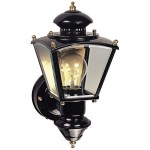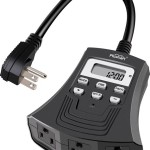How To Run Outdoor Extension Cords
Running outdoor extension cords can be a necessary task for providing power to outdoor appliances, tools, and lighting. However, it's essential to do so safely to prevent electrical hazards and ensure the longevity of your equipment. Understanding the critical aspects of running outdoor extension cords will help you create a safe and efficient electrical system for your outdoor space.
1. Choosing the Right Cord:
Selecting the correct extension cord for your outdoor needs is crucial. Consider the length, gauge, and type of cord required. The length should be sufficient to reach the desired location without creating unnecessary slack. The gauge, measured in AWG (American Wire Gauge), indicates the thickness of the wire, with lower numbers indicating thicker wires. Choose a cord with an appropriate gauge for the amperage (current) of the devices you'll be using.
2. Outdoor-Rated Cords:
Outdoor extension cords are specifically designed to withstand the elements, including moisture, sunlight, and temperature fluctuations. Look for cords marked with "Outdoor Use" or "UL Listed for Outdoor Use" to ensure they meet safety standards. These cords have durable insulation and jackets to protect against moisture and abrasion.
3. Safe Handling:
When handling outdoor extension cords, always avoid kinking, twisting, or running them over with equipment. These actions can damage the cord and create electrical hazards. Inspect the cords regularly for any signs of wear or damage, such as cuts, tears, or loose connections. Replace damaged cords promptly.
4. Avoiding Overloading:
Overloading an extension cord can lead to overheating, electrical fires, and damage to the connected devices. Never exceed the maximum amperage rating of the cord. Check the cord's label for the specified amperage limit and add up the amperage draw of the devices plugged into it. Ensure the total amperage does not exceed the cord's capacity.
5. GFCI Protection:
Ground Fault Circuit Interrupters (GFCIs) are safety devices that protect against electrical shocks by detecting ground faults. Outdoor extension cords should be equipped with GFCI outlets or be connected to a GFCI-protected outlet to prevent electrical injuries.
Conclusion:
By considering these essential aspects of running outdoor extension cords, you can create a safe and efficient electrical system for your outdoor space. Use the right cord, ensure it's outdoor-rated, handle it carefully, avoid overloading, and incorporate GFCI protection to prevent electrical hazards and extend the lifespan of your equipment.

How To Safely Use Extension Cords Outside Fusion Electric

How To Tell If An Extension Cord Is Safe Use Outdoors

Extension Cord And Power Strip Safety

Outdoor Extension Cord Safety Tips

When An Extension Cord Is For Outdoor Use Mr Electric

How To Protect Outdoor Extension Cord From Rain 4 Ways

How To Tell If An Extension Cord Is For Outdoor Use

How To Tell If An Extension Cord Is For Outdoor Use
The Differences Between Indoor And Outdoor Extension Cords Hunker

Indoor And Outdoor Extension Cords Power Cord
Related Posts







